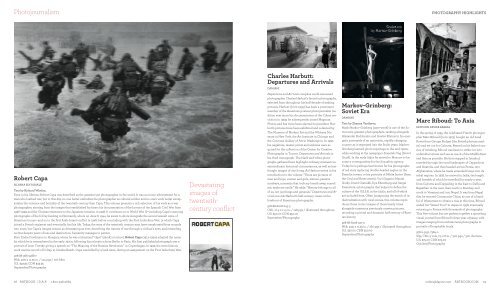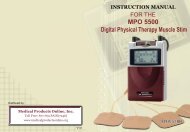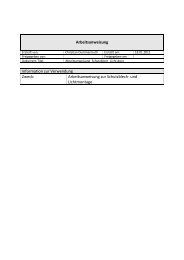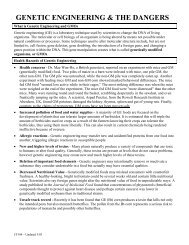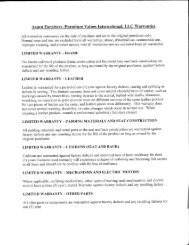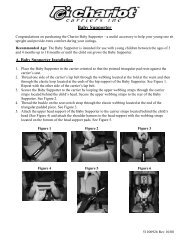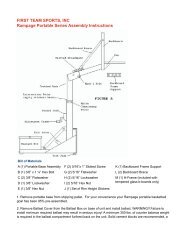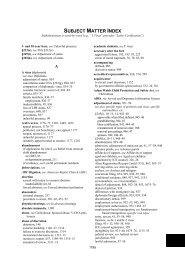Create successful ePaper yourself
Turn your PDF publications into a flip-book with our unique Google optimized e-Paper software.
Photojournalism<br />
Robert Capa<br />
sILvAnA edITorIALe<br />
Text by richard whelan.<br />
even in his lifetime, robert Capa was described as the greatest war photographer in the world. It was an ironic achievement for a<br />
man who loathed war, but to this day, no one better embodies the photographer as cultural soldier and no one’s work better encapsulates<br />
the violence and brutality of the twentieth century than Capa. this volume presents a rich selection of his work as a war<br />
photographer, starting from the images that established his fame: his documentation of the horrors of the Spanish Civil War from<br />
1936–1939 and the Chinese resistance to the Japanese invasion in 1938. It continues on to World War II—including Capa’s stunning<br />
photographs of the D-Day landing in normandy, where on June 6, 1944, he swam to shore alongside the second assault wave of<br />
american troops—and on to the first arab–Israel conflict in 1948, before concluding with the First Indochina War, in which Capa<br />
joined a French regiment and eventually lost his life. today, the wars of the twentieth century may have transformed from wounds<br />
into scars, but Capa’s images remain as devastating as ever, describing the trauma of war through a civilian’s eyes, and reminding<br />
us that despite years of loss and destruction, humanity manages to persist.<br />
Born endre Friedmann in Hungary, where he was nicknamed “cápa” (shark) at school, Robert Capa (1913–1954) adopted the name<br />
by which he is remembered in the early 1930s, following his relocation from Berlin to paris. His first published photograph was a<br />
portrait of Leon trotsky giving a speech on “the meaning of the russian revolution” in Copenhagen, in 1932; his most famous<br />
work was his record of D-Day, at omaha Beach. Capa was killed by a land mine, during an assignment on the First Indochina War.<br />
978-88-366-2288-7<br />
Hbk, 9.75 x 11.25 in. / 144 pgs / 100 b&w.<br />
U.S. $49.95 CDn $49.95<br />
September/photography<br />
78 artBooK | D.a.p. 1.800.338.2665<br />
Devastating<br />
images of<br />
twentiethcentury<br />
conflict<br />
Charles Harbutt:<br />
Departures and Arrivals<br />
dAMIAnI<br />
Departures and Arrivals compiles world-renowned<br />
photographer Charles Harbutt’s favorite photographs,<br />
selected from throughout his half-decade of making<br />
pictures. Harbutt (born 1935) has been a prominent<br />
member of the american postwar photojournalist tradition<br />
ever since his documentation of the Cuban revolution<br />
in 1959; he subsequently joined magnum<br />
photos and has twice been elected its president. Harbutt’s<br />
pictures have been exhibited and collected by<br />
the museum of modern art and the Whitney museum<br />
in new York, the art Institute in Chicago and<br />
the Corcoran gallery of art in Washington. In 1997,<br />
his negatives, master prints and archives were acquired<br />
for the collection of the Center for Creative<br />
photography in tucson. Departures and Arrivals is<br />
his third monograph. the black-and-white photographs<br />
gathered here highlight ordinary moments in<br />
extraordinary historical circumstances, as well as less<br />
fraught images of city living. as Harbutt writes in his<br />
introduction to the volume: “there are pictures of<br />
men and boys, women and girls, statues, pensive<br />
monkeys, moments that took my breath away, scared<br />
me, made me smile.” He adds: “History belongs to all<br />
of us, not just kings and generals.” Departures and Arrivals<br />
records Harbutt’s half-century career at the<br />
forefront of american photography.<br />
978-88-6208-243-3<br />
Clth, 10.5 x 11.5 in. / 128 pgs / illustrated throughout.<br />
U.S. $50.00 CDn $50.00<br />
September/photography<br />
Markov-Grinberg:<br />
Soviet Era<br />
dAMIAnI<br />
Text by zhanna vasilyeva.<br />
mark markov-grinberg (1907–2006) is one of the Soviet<br />
era’s greatest photographers, ranking alongside<br />
alexander rodchenko and gustav Klutsis in his energetic<br />
portrayals of an optimistic, rapidly changing<br />
country as it segwayed into the Stalin years. markovgrinberg<br />
learned photo-reportage in the mid-1920s,<br />
while working at the newspaper Sovyetski Yug (Soviet<br />
South). In the early 1930s he moved to moscow to become<br />
a correspondent for the Soyuzfoto agency.<br />
today he is perhaps best known for his photographs<br />
of red stars replacing double-headed eagles on the<br />
Kremlin towers, or his portraits of nikita Izotov (from<br />
the Coal and Roses series), Yuri gagarin, maxim<br />
gorky, David oistrakh, Ilya ehrenburg and Sergei<br />
eisenstein—photographs that helped to define the<br />
culture of the U.S.S.r. in the 1930s, and all of which<br />
are included here. often juxtaposing the march of industrialization<br />
with rural scenes, this volume reproduces<br />
those iconic images of those heady times<br />
alongside numerous previously unseen pictures,<br />
recording a pivotal and dramatic half-century of russian<br />
history.<br />
978-88-6208-227-3<br />
Hbk, 9.25 x 11.25 in. / 160 pgs / illustrated throughout.<br />
U.S. $50.00 CDn $50.00<br />
September/photography<br />
PhoToGrAPhY hIGhLIGhTs<br />
Marc Riboud: To Asia<br />
edITIons xAvIer bArrAL<br />
In the spring of 1955, the celebrated French photographer<br />
marc riboud (born 1923) bought an old Land<br />
rover from george rodger (the British photojournalist)<br />
and set out for Calcutta. reared on his father’s stories<br />
of traveling, riboud was keen to strike out into<br />
unfamiliar terrain and see as much of the middle east<br />
and asia as possible. He first stopped in Istanbul,<br />
traveled through the rural landscapes of Cappadocia<br />
and anatolia, and then headed across persia, into<br />
afghanistan, where he made extended forays into its<br />
tribal regions. In 1956, he arrived in India, the length<br />
and breadth of which he travelled for nearly a year,<br />
from Calcutta and Darjeeling in the east to Delhi and<br />
rajasthan in the west, then south to Bombay, and<br />
north to varanasi and into nepal. It was from nepal<br />
that he entered Communist China, as one of a handful<br />
of Westerners to obtain a visa at this time. riboud<br />
ended his “grand tour” in Japan in 1958, eventually<br />
returning to France with thousands of photographs.<br />
this five-volume box set gathers together a sprawling<br />
visual journal from riboud’s three-year odyssey, with<br />
images ranging from architectural photographs to<br />
portraits of hospitable locals.<br />
978-2-9151-7384-0<br />
Slip, Clth, 5 vols, 7.5 x 8 in. / 320 pgs / 300 duotone.<br />
U.S. $75.00 CDn $75.00<br />
october/photography<br />
orders@dapinc.com artBooK.Com 79


